'For those things, which were done either by our fathers or ancestors, and in which we ourselves had no share, I can scarcely call our own.'
|
History records Simon Fraser, 11th Lord Lovat, a loyal British army officer support of the government, a spy and a Catholic convert. He was also a turncoat, who switched sides during the Jacobite uprisings. After fleeing the battlefield Culloden in 1746, Fraser was found hiding in a hollow of a tree. He was tried for high treason in the August of that year and convicted on that count. He was executed on the 9th April the following year. Lovat went to his death on Tower Hill. The block and the axe on display in the Tower of London was used for his execution, he was the last person to be beheaded in Britain. Several people, who gathered to watch the beheading, died after the scaffold they were on collapsed. Of this, it is said Fraser found the incident so funny that his death led to the phrase "laughing your head off." However, there is no record of this. Fraser, according to a sympathiser, died an honourable death with the words
'For those things, which were done either by our fathers or ancestors, and in which we ourselves had no share, I can scarcely call our own.'
0 Comments
I took a bit of a fancy to James Hepburn the 4th Earl of Bothwell while still at school and the attraction hasn't waned since seeing him portrayed by Kevin McKidd in the 2004 mini-series Gunpowder, Treason and Plot. Bothwell was a staunch supporter of the regency under Mary of Guise and his support continued when Mary's daughter arrived from France to take the Scottish throne, however, he was unhappy with her marriage to Henry Stuart, Lord Darnley. Darnley, by all accounts, was a disreputable young man that history describes as a heavy drinker, vain, arrogant, self-centred, egotistical and violent he was also disliked by many of his peers. Both Mary and Bothwell were suspected of being involved, in Darnley's murder - Bothwell was tried but was cleared. After Mary was forced to abdicate and incarcerated, it was Bothwell's intention to rescue her, but circumstances forced him to flee to Norway where he was questioned about monies owed to Anna Throndsen, a woman who he had abandoned years earlier. He was held first at Copenhagen Castle and by 1573 he found himself in solitary confinement in Dragsholm Castle also in Denmark. I still dither in my opinion of him, I'm not sure if he was ambitions and power crazy or a true noble of Scotland who put his country first?
It was at Dragsholm Castle that James Hepburn died on the 14th April in 1578 insane, weakened and degraded allegedly chained to a stone pillar and unable to stand. In a gruesome end to his tale we find that his mummified remains were displayed in the church in the village of Faarevejle until finally buried some four centuries later. I often wonder what I would do in a given situation in history, for instance, would I have followed Richard Duke of York against Henry VI? At Henry VIII's separation with Rome would I have stuck with the old religion or taken up the new Protestant one? Nobody knows what they would have done, and I suppose it all depends on who your family were, what positions they held and how they thought the turning of fortunes wheel might affect them. My 15th century West Country ancestor was a fervent heretic hunter, yet his Catholic son, considered ‘suspect and weak and followed only those noblemen who are dangerous in the county’ conformed to the teachings of the Protestant church. I have to assumes that, if I was with my ancestor at this time I might to have joined him in capturing those men who were not of the same faith as me or maybe I would have been willing to join a rebellion that was taking place in the first few months of the reign of Queen Mary that was known as Wyatt's Rebellion. The proposed marriage of the newly crowned Queen Mary to Philip of Spain and the fear that many people had that England would once again turn towards the old religion was at the root of Wyatt's rebellion. He had previously been imprisoned for his support of Lady Jane Grey’s claim to the throne but he had managed to escape the executioner's axe. Wyatt's new plan was to remove Mary from the throne and replace her with her Elizabeth, who would then marry Edward Courtenay. Courtenay was never a proven rebel but he was however embroiled in the plot. Peter Carew, a West Country gentleman did take part as did Henry Grey, Duke of Suffolk. Many others joined Wyatt but no one seemed to notice that the vast majority of the populace had taken to Mary as their queen. On entering London Wyatt's rebels were outnumbered by the queen's forces and Wyatt was captured. While in the tower Wyatt named Edward Courtenay as the instigator of the rebellion and begged Courtenay to admit to it. By implication, Courtenay and Princess Elizabeth were suspected of being involved and they too were imprisoned, when no evidence was found they were both released and Courtenay fled the country but Wyatt was sent to trial at Westminster Hall on 15th of March. Thomas Wyatt mounted the scaffold on the 11th April in 1554 and was executed for treason. Following his trial Thomas Wyatt was beheaded on Tower Hill, his body quartered and his bowels and genitals burned. Wyatt's demise was gruesome but the treatment of his remains even more so, his head and body parts were then taken and parboiled and were later displayed for all to see, his head however disappeared. What of the fate of Carew and the Duke of Suffolk? Carew, like Courteney, escaped abroad he was captured and imprisoned but later released on payment of his debts to the crown. The Duke of Suffolk also escaped but was found on his estate in Warwickshire, where he was betrayed by his gamekeeper.
The Norman family of Tosny - pronounced Tony appear only briefly in England's history, as a family they were all gone (in name at least) by the beginning of the 14th century. Their lands, as was the norm, can be found forming part of the estates of other medieval lords who married Tosny daughters and heiresses. This family's descent is complicated and confusing partly because the direct male line was either named Roger or Ralph also there were two, maybe three men with the same name living at the same time! My ancestral line ends with Godehode de Tosny who received one manor on her marriage, that of Brinkley in Cambridgeshire, to William Mohun. This manor was held in 1086 by Judith of Lens and passed to Godehode through her mother Adalize the daughter of Waltheof the Anglo-Saxon Earl of Northumbria and the aforementioned Judith, the niece of William the Conqueror. Godehode's brother was one of the many Ralph de Tosny, he died in 1157. Alice de Tosny, who is the subject of this blog today was Ralph's descendant, she was born on the 26th April in 1284. We will, of course, never know the real Alice, we can only guess how she managed her life and coped with what it threw at her. What we do know is that Alice and women like her were not as subservient as history has lead us to believe. These women had influence, control and power and many were not afraid to use it, however, throughout history, women's lives have been viewed by the gender-based functions they performed - that is a wife, a mother, a widow and sometimes an heiress. Alice de Tosny was all of these things, she fits perfectly into this view of a medieval woman. Firstly, we see Alice as an heiress, she was a high ranking English noblewoman who lived during the reign of Edward I. At the beginning of the 14th century, Alice was wealthy in her own right, she had received the Tosny estates when her brother Robert died in 1309 without issue. This inheritance, as we have seen, had its roots at the beginning of the 12th century with the marriage of Adalize, one of two heiresses and daughters of the Earl of Northumberland and his Norman wife Judith of Lens, to Ralph de Tosny. Alice was a wife three times and a widow twice. Her first husband was Thomas Leybourne who had died in 1307 with whom she had a daughter Juliana (she too would become an heiress - the manor of Leybourne in Kent passed to Juliana on the death of her paternal grandfather William Leybourne in 1310.) Alice continued to hold her Tosny lands herself but on her marriage to Guy de Beauchamp the Earl of Warwick, it became part of the Beauchamp estate. With Beauchamp Alice had seven children and after his death in 1315 she married her third husband William de la Zouche with whom she had two children. In totally Alice was the mother of ten children. The majority of the Tosny lands and manors passed to her eldest son Thomas de Beauchamp, the 11th Earl of Warwick on Alice's death in 1325. Eventually and for hardly any time at all, Alice's inheritance ended as it had begun, held by heiresses - Isabel and Anne Neville, the daughters of Anne Beauchamp the wife of Richard Neville. What happened to it after that is a story for another day. A second set of sisters, Isabel and Elizabeth, the daughters of Alice and Guy de Beauchamp, received two of the Tosny manors that of Whittlesford and Brinkley. The subject of the heiress has not been covered fully enough. More often than not the heiress is usually talked about as part of her family where the main focus of attention are the eldest sons and their children. If she is discussed at it is what she brought to the family she married into. Naturally, there are no visual representations of Alice, however you can see the Tosny coat of arms (the maunch gules or a red sleeve) quartered in that of Guy de Beauchamp's.
I often wonder what I would do in a given situation in history, for instance, would I have followed Richard Duke of York against Henry VI? At Henry VIII's separation with Rome would I have stuck with the old religion or taken up the new Protestant one? Nobody knows what they would have done, and I suppose it all depends on who your family were, what positions they held and how they thought the turning of fortunes wheel might affect them. My 15th century West Country ancestor was a fervent heretic hunter, yet his Catholic son, considered ‘suspect and weak and followed only those noblemen who are dangerous in the county’ conformed to the teachings of the Protestant church. I have to assumes that, if I was with my ancestor at this time I might to have joined him in capturing those men who were not of the same faith as me or maybe I would have been willing to join a rebellion that was taking place in the first few months of the reign of Queen Mary that was known as Wyatt's Rebellion. For leading a rebellion against the crown Thomas Wyatt mounted the scaffold on the 11th April in 1554 and was executed for treason. The proposed marriage of the newly crowned Queen Mary to Philip of Spain and the fear that many people had that England would once again turn towards the old religion was at the root of Wyatt's rebellion. He had previously been imprisoned for his support of Lady Jane Grey’s claim to the throne but he had managed to escape the executioner's axe. Wyatt's new plan was to remove Mary from the throne and replace her with her Elizabeth, who would then marry Edward Courtenay. Courtenay was never a proven rebel but he was however embroiled in the plot. Peter Carew, a West Country gentleman did take part as did Henry Grey, Duke of Suffolk. Many others joined Wyatt but no one seemed to notice that the vast majority of the populace had taken to Mary as their queen. On entering London Wyatt's rebels were outnumbered by the queen's forces and Wyatt was captured. While in the tower Wyatt named Edward Courtenay as the instigator of the rebellion and begged Courtenay to admit to it. By implication, Courtenay and Princess Elizabeth were suspected of being involved and they too were imprisoned, when no evidence was found they were both released and Courtenay fled the country but Wyatt was sent to trial at Westminster Hall on 15th March. Following his trial Thomas Wyatt was beheaded at Tower Hill, his body quartered and his bowels and genitals burned. Wyatt's demise was gruesome but the treatment of his remains even more so, his head and body parts were then taken and parboiled and were later displayed for all to see, his head however disappeared.
What of the fate of Carew and the Duke of Suffolk? Carew, like Courteney, escaped abroad he was captured and imprisoned but later released on payment of his debts to the crown. The Duke of Suffolk also escaped but was found on his estate in Warwickshire, where he was betrayed by his gamekeeper. King Alfred the Great became King of England on the 23rd April 871 following the death of his brother Ethelred. By 878, the kingdoms of Anglo-Saxon England had fallen into the hands of the Viking invaders, it was King Alfred’s kingdom of Wessex that stood alone.
At this point in time the position England was in can be summed up in one famous tale, that is, King Alfred burning the cakes of some poor peasant woman who left him in charge. It is unlikely that this event ever happened, but as a tale it shows quite clearly the danger that England's last kingdom faced, and how much responsibility was placed on Alfred’s head. In reality, by the May of 878 Alfred’s Wessex was secured, and after years of fending off the Viking invaders King Alfred finally struck a deal with the Scandinavians following his famous victory at the Battle of Edington in Wiltshire. Not only did he gain some control of these marauding Vikings, but he paved the way for the future unity of England. Soon after the Viking defeat, Alfred encouraged the Viking leader Guthrum to convert to Christianity. Guthrum’s baptism is said to have taken place at Wedmore and where, it is also said, a formal treaty, sometimes called the Treaty of Wedmore, was signed. However, historians think that this may have occurred else where and that the passing of time has merged the two events into one. Regardless of this, under this ‘treaty’ the vikings agreed to leave Wessex in peace and return to East Anglia to the area we know now as Danelaw. King Alfred the Great is an English hero, who in my opinion, is a match for Henry V and outshines Richard I by miles. 5th April 1531 In 1531, Richard Roose was a cook in the home of John Fisher, the Bishop of Rochester, who in way of a prank, (he claimed) served his employer and other guests porridge which he had laced with a laxative. After the meal all of those who ate Roose's offerings became ill and two died leading to his conviction of poisoning with murderous intent. It has been suggested, although there was no proof to back up the claim, that Roose had been paid by someone in the Boleyn family to poison Fisher, an opponent of Henry VIII’s church reforms and his plan to divorce Catherine of Aragon and marry Anne Boleyn. Roose was arrested and was denied the chance to plead his case. Henry VIII's Act of Poisoning was quickly passed making murder by poisoning high treason that was punishable by boiling. Was this dreadful punishment specifically created because Roose was a cook? Death by hanging was the most commonly used form of capital punishment for those convicted of murder and those convicted of high treason, as was Roose, were punished by hanging, drawing and quartering, so why did Richard Roose not receive either one of those punishments? I am having trouble seeing poisoning as any more abominable than any other act of murder that the perpetrator needs to be executed in such a specifically horrible way, the suggestion was that poisoning was a particularly wicked and despicable crime and that Henry's act would deter other would be poisoners - why suddenly apply the eye for an eye theory, why not just hang the man and be done with it? It seems a bit strange to me? Richard Roose met his horrific death, boiled in front of a large crowd at Smithfield in London on this day in 1531, his case was mentioned in the chronicle of the Grey Friars of London "This yere was a coke boylyd in a cauderne in Smythfeld for he wolde a powsyned the bishop of Rochester Fycher with dyvers of hys servanttes, and he was lockyd in a chayne and pullyd up and downe with a gybbyt at dyvers tymes tyll he was dede. John Fisher would survive his murderous cook by just four years, he, just as Roose, was one of many who got in the way of Henry's grand plans. He was executed for treason for refusing to take the Oath of Succession and accept the king as the Supreme Head of the Church of England.
The 2nd April marks the death of Arthur, Prince of Wales, son of King Henry VII and Elizabeth of York. Arthur and his new wife had left their home at Tickenhill Manor, where they had been living since their marriage. Just before Christmas 1501, they arrived at Ludlow Castle in Shropshire, a fine castle that stands on the River Teme. Even before the arrived at Ludlow, Arthur was suffering from ill health, he had been growing weaker since his wedding and by the beginning of March the following year both Arthur and Catherine were afflicted by an unknown illness. Although the real cause has never been established many historians believe it was sweating sickness or tuberculous. Catherine recovered, Arthur did not, he died this day, the 2 April 1502. He was just fifteen. Henry VII did not attend the funeral, many believe he was too devastated by the boys death, Catherine did not attend either. Arthur’s untimely death led to his younger brother, Prince Henry, becoming the heir to the young boys throne, inheriting his lands and his wife.
Certainly the event was a turning point in history. The coronation of King Henry V on the 9th April 1413 in Westminster Abbey, according to chronicler Adam of Usk was "marked by unprecedented storms, with driving snow which covered the country's mountains, burying men and animals and houses and, astonishingly, even inundating the valleys and fenlands, creating great danger and much loss of life." People at the time could not decide whether this was good or bad and history has asked the same question. So was Henry V, history's golden boy, an amiable and pious king or was he arrogant and cruel? Henry is mostly remembered for his involvement with France between 1415 and 1420 where he was successful in taking the port of Harfleur, the town of Rouen, and managed to force the French to sign the Treaty of Troyes after which he was recognised as the heir to the French throne, which was sealed by his marriage to Charles VI's daughter Catherine of Valois. Following their marriage the couple returned home to England, six months later Catherine's coronation took place and two months after that, Henry returned to France. The young queen gave birth to her son Henry, later Henry VI, in the December of 1421, but that day the of hero of Agincourt lay dying from dysentery at the Chateau de Vincennes, in France, where he died on the 31st of August, leaving his lands and titles in the tiny hands of his nine month old son. Interestingly, one of the stones that is set into the Imperial State crown, that was worn by the queen after her coronation and at the state opening of Parliament, is said to have been in Henry's helmet at Agincourt.
On the 28th April 1789, Captain William Bligh and eighteen crew members had been cast adrift from the HMS Bounty that had been sailing from Tahiti to the West Indies. It was on the 14th of June that they finally reached the island of Timor after travelling nearly 4,000 miles in a small boat. Captain Bligh eventually returned to England arriving on the 14th of March the following year to find the the country was already talking of the mutiny. He was at first proclaimed a hero, but later court martialled for the loss of his ship. This resulted in his acquittal.
The crew of the HMS Bounty, led by Fletcher Christian, mutinied just off the Friendly Islands. Following setting their captain adrift, they headed for the Pitcairn Islands Who was the goody and baddie in this sad tale? Was it Bligh, the supposed cruel and brutal Captain? Was Fletcher Christian a hero for not being afraid to standing up to a bully or was Bligh doing what he was supposed to do, that is captain his ship and keep control his men. Was Christian a rebel who mutinied when he was denied what he wanted. What was the truth I wonder? |
Archives
February 2024
Categories
All
After ten years in the workplace I became a mother to three very beautiful daughters, I was fortunate enough to have been able to stay at home and spend my time with them as they grew into the young women they are now. I am still in the position of being able to be at home and pursue all the interests I have previously mentioned. We live in a beautiful Victorian spa town with wooded walks for the dog, lovely shops and a host of lovely people, what more could I ask for.
All works © Andrea Povey 2014. Please do not reproduce without the expressed written consent of Andrea Povey. |
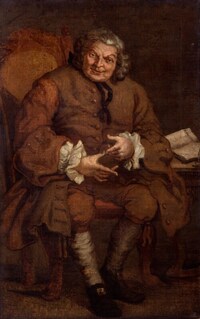
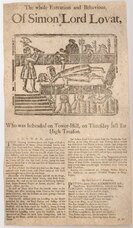
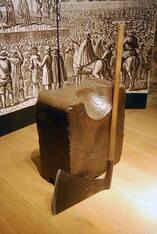
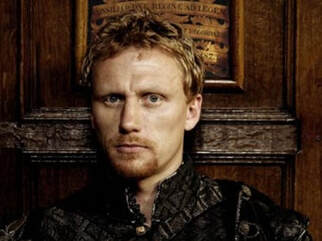
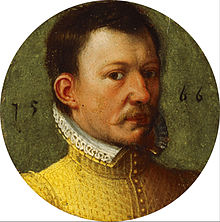
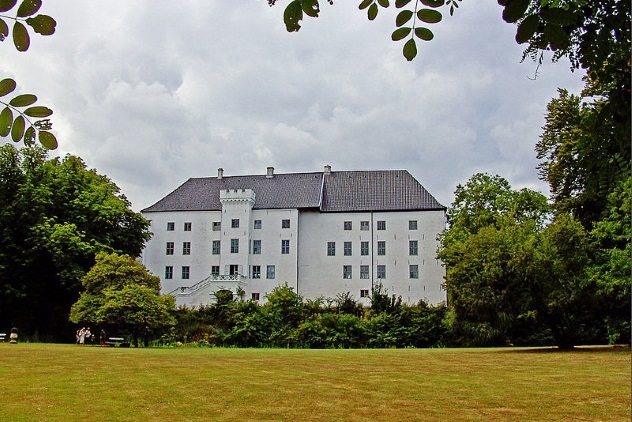
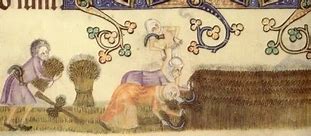
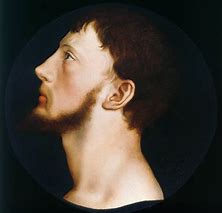
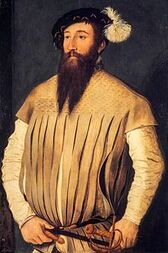
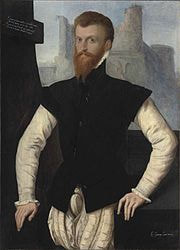
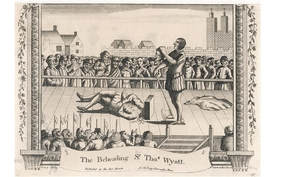
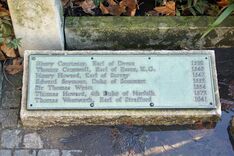
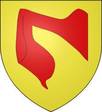
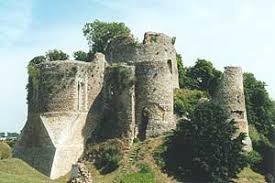
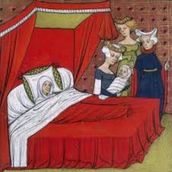
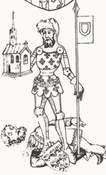

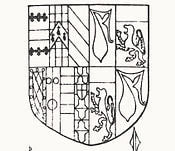

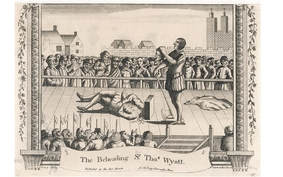
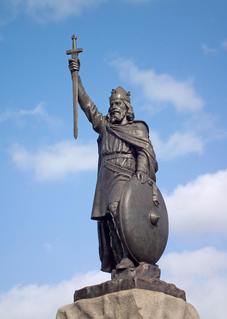
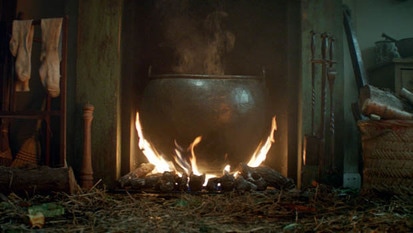
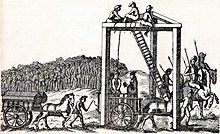
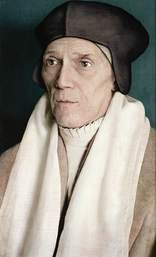
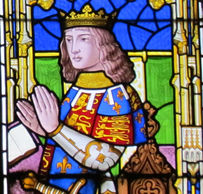
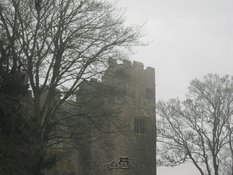
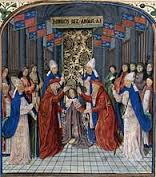
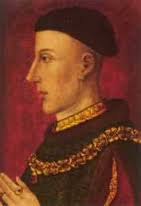
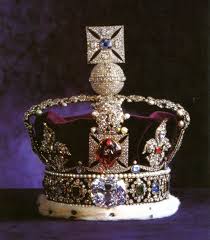
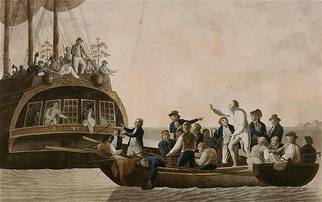

 RSS Feed
RSS Feed
